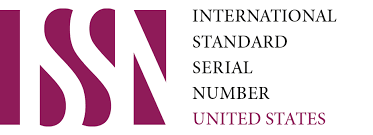Formation Of Speech Of Children With Hearing Impairments Through Visual Activity
Keywords:
Fine arts, special methodology, developmental disabilitiesAbstract
This article discusses the involvement of children with hearing and developmental disabilities in art, the development of their artistic abilities and the formation of their speech. One of the main tasks of the visual arts methodology is the development of cognitive activity of children with developmental disabilities. The teacher teaches children to perceive the world around them, objects, and understand their essence. Children with hearing impairments, on the contrary, acquire knowledge through visual analyzers. This article covers the process of perception, imagination, visual activity and sensory education of children with hearing impairments.
References
D.Nazarova, Z.Mamarajabova. Surdopedagogika — T.: Innovatsiya-ziyo. 2019.
Sadirova, Kamola Giyozovna. "THE IMPORTANCE OF TEACHING FINE ARTS TO CHILDREN
WITH HEARING PROBLEMS." (2023).
Giyozovna, S. K. (2025, March). ESHITISHDA NUQSONI BO ‘LGAN BOLALAR TASVIRIY
FAOLIYATI JARAYONIDA KASBGA YO ‘NALTIRISH. In International Educators Conference (pp.
-155).
Sadirova K. G. THE IMPORTANCE OF TEACHING FINE ARTS TO CHILDREN WITH HEARING
PROBLEMS. – 2023.
Sadirova, K. G. (2023). THE IMPORTANCE OF TEACHING FINE ARTS TO CHILDREN WITH
HEARING PROBLEMS.
Giyozovna S. K. ESHITISHDA NUQSONI BO ‘LGAN BOLALAR TASVIRIY FAOLIYATI
JARAYONIDA KASBGA YO ‘NALTIRISH //International Educators Conference. – 2025. – С. 153-155.
Giyozovna, Sadirova Kamola. "ESHITISHDA NUQSONI BO ‘LGAN BOLALAR TASVIRIY
FAOLIYATI JARAYONIDA KASBGA YO ‘NALTIRISH." International Educators Conference. 2025
Downloads
Published
Issue
Section
License

This work is licensed under a Creative Commons Attribution-NonCommercial 4.0 International License.
User Rights
Under the Creative Commons Attribution-NonCommercial 4.0 International (CC-BY-NC), the author (s) and users are free to share (copy, distribute and transmit the contribution).
Rights of Authors
Authors retain the following rights:
1. Copyright and other proprietary rights relating to the article, such as patent rights,
2. the right to use the substance of the article in future works, including lectures and books,
3. the right to reproduce the article for own purposes, provided the copies are not offered for sale,
4. the right to self-archive the article.












